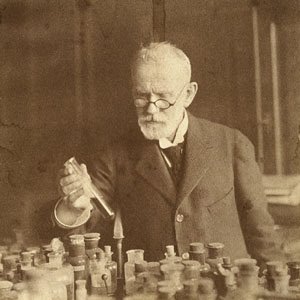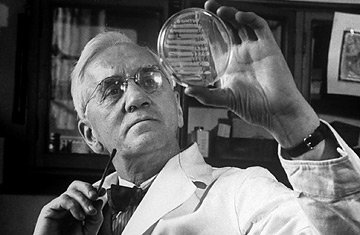 Antibiotics were one of medicine's greatest achievements. In addition to making it possible to cure bacterial infections accidentally acquired by various means (water, food, air, etc.), antibiotics have provided an opportunity for medicine to become more skillful in the treatment of many diseases.
Antibiotics were one of medicine's greatest achievements. In addition to making it possible to cure bacterial infections accidentally acquired by various means (water, food, air, etc.), antibiotics have provided an opportunity for medicine to become more skillful in the treatment of many diseases.
Especially in the field of surgery, it was thanks to antibiotics that it was possible to safely carry out interventions that before would have failed at the mercy of a simple infection. It is impossible to know today how many human lives were saved by antibiotics, but surely many millions.
When the visionary chemist Paul Ehrlich (Germany, 1854-1915) dreamed of the existence of magic bullets, he was far from imagining that they were so close, most likely on the ground he was walking on.
His dream was that there would be a product that could kill bacteria without pinching our cells. This dream led him to find a cure for syphilis through the use of a synthetic, even slightly toxic, but life-saving substance.
 But he never got to know the real and natural magic bullets. At that time, it was not known that nature, in particular the microbial world, was hiding this treasure.
But he never got to know the real and natural magic bullets. At that time, it was not known that nature, in particular the microbial world, was hiding this treasure.
It took many years, a succession of accidents and some enterprising spirits for the magic bullets to arrive at the miraculous antibiotics. It was 1926, when the misfortune of a contaminated culture gave Alexander Fleming (England, 1881-1955) the fantastic opportunity to make a discovery that would revolutionize human life.
A mold, not unlike that which appears on rotten fruit or spoiled jam, had contaminated their cultures with bacteria and prevented them from growing. He could have simply thrown it all away with a gesture of annoyance, but he didn't. He soon realized that he had a fabulous discovery in front of him – penicillin.
The nearly 20 years that followed until the first use of this antibiotic (during World War II) were long. On the one hand, technology was lacking, it was necessary to produce the antibiotic on a large scale and give it the necessary purity to be used in medicine.
On the other hand, it was necessary for someone to see that product as a good business idea. And, although at first many didn't believe it, it was an excellent business idea… the years that followed proved it.
 The idea was launched – antibiotics were natural products, produced by microbes, which live, above all, in the soil. Finding new antibiotics was therefore very easy. For the pharmaceutical industry, an inexhaustible source of wealth seemed to have emerged, for medicine, new horizons and hopes were opened. It was even said that bacterial infections had their days numbered...
The idea was launched – antibiotics were natural products, produced by microbes, which live, above all, in the soil. Finding new antibiotics was therefore very easy. For the pharmaceutical industry, an inexhaustible source of wealth seemed to have emerged, for medicine, new horizons and hopes were opened. It was even said that bacterial infections had their days numbered...
Year after year, hundreds of new antibiotics were discovered, slightly altered by chemical synthesis and produced on a large scale. As well as being fantastic for curing infections in humans, they could also be used to prevent infections in animal production and agriculture.
But that wasn't all… after all, they could also be used as growth promoters in intensive livestock farming, especially in cattle and pigs. These were periods of great euphoria for the chemical and pharmaceutical industry. Tons and tons of antibiotics were produced and consumed by humans and animals.
A good part of these tons was being released into animal manure, into the sludge of sewage treatment plants, into the sewers themselves... Anyway, our little planet was being invaded by many tons of fantastic bullets, which progressively lost their magic...
We will come back to this subject later.
Professor and Researcher at the School of Biotechnology of the Catholic University, Porto
Science in the Regional Press – Ciência Viva
PHOTO http://sandwalk.blogspot.pt/2009/05/nobel-laureate-paul-ehrlich.html
http://cafaf.blogspot.pt/p/institucional.html



















Comments